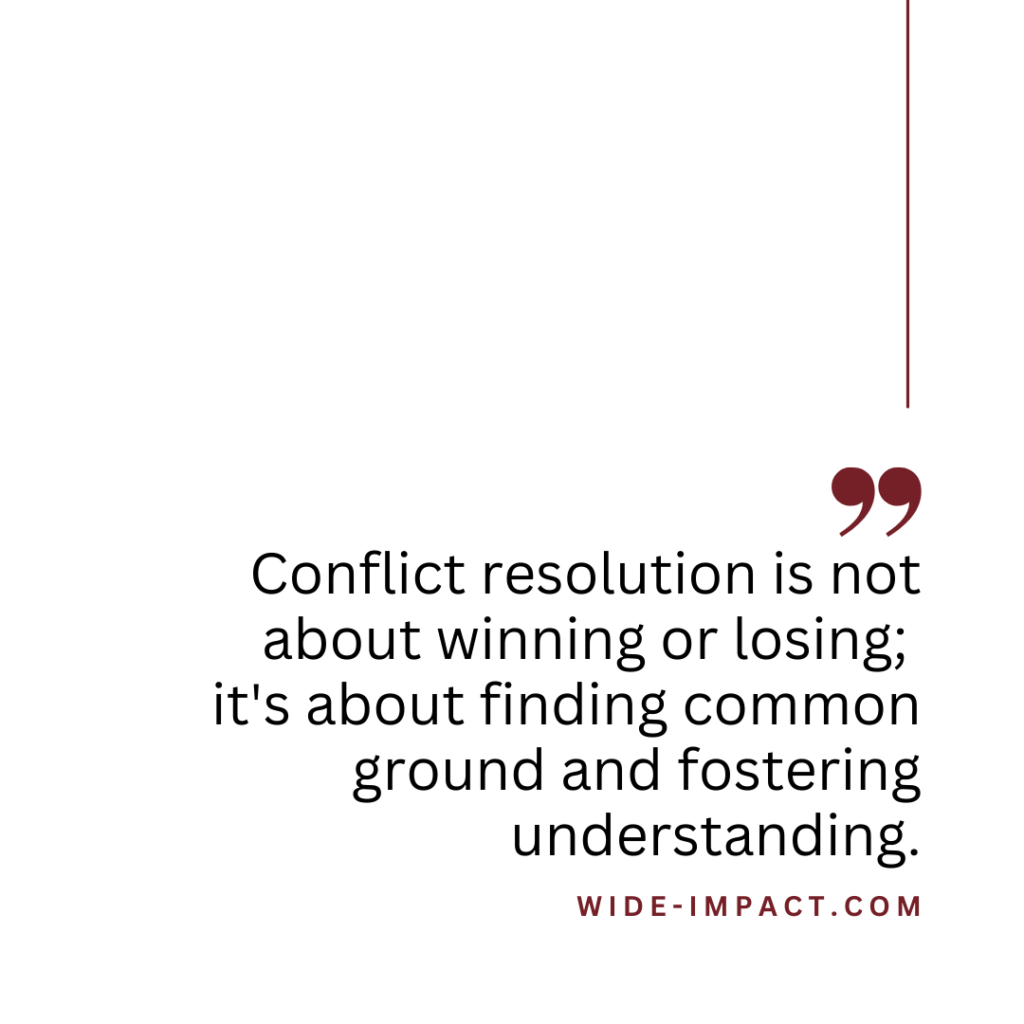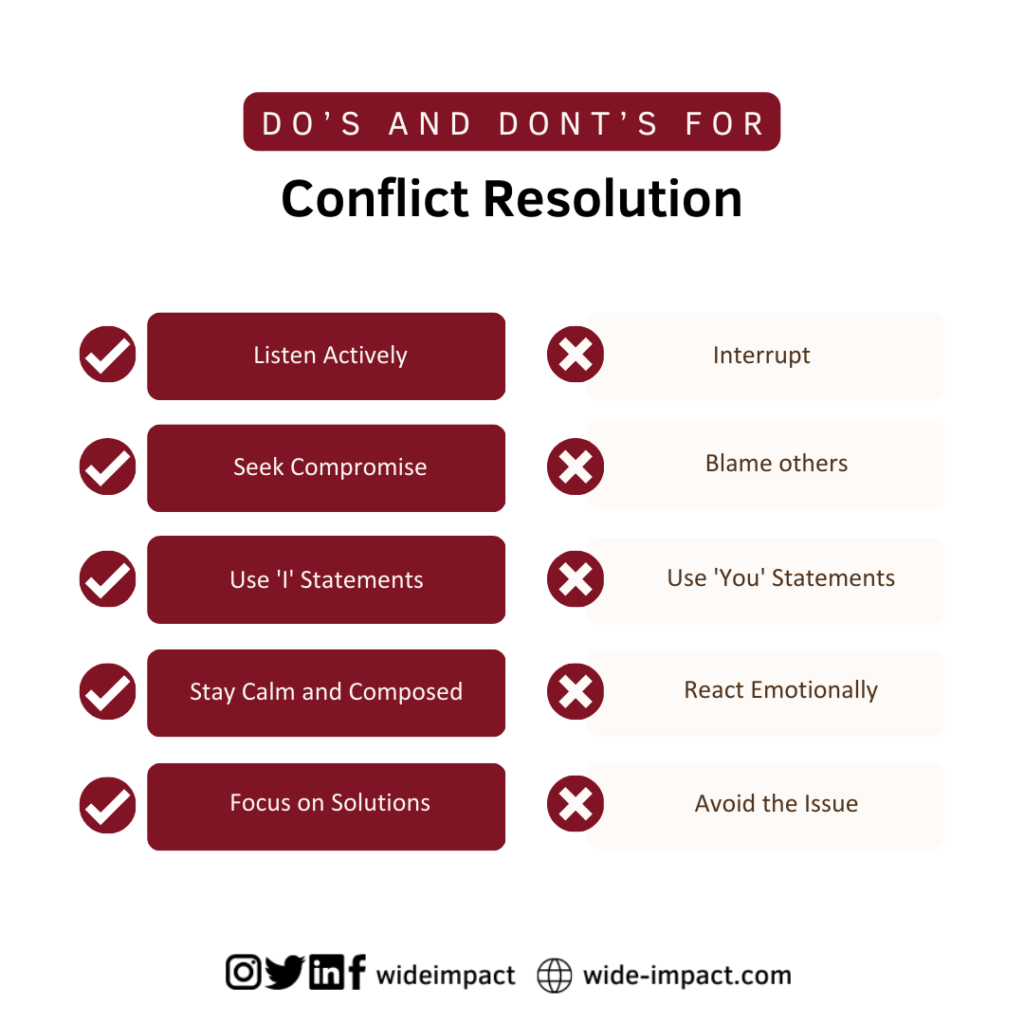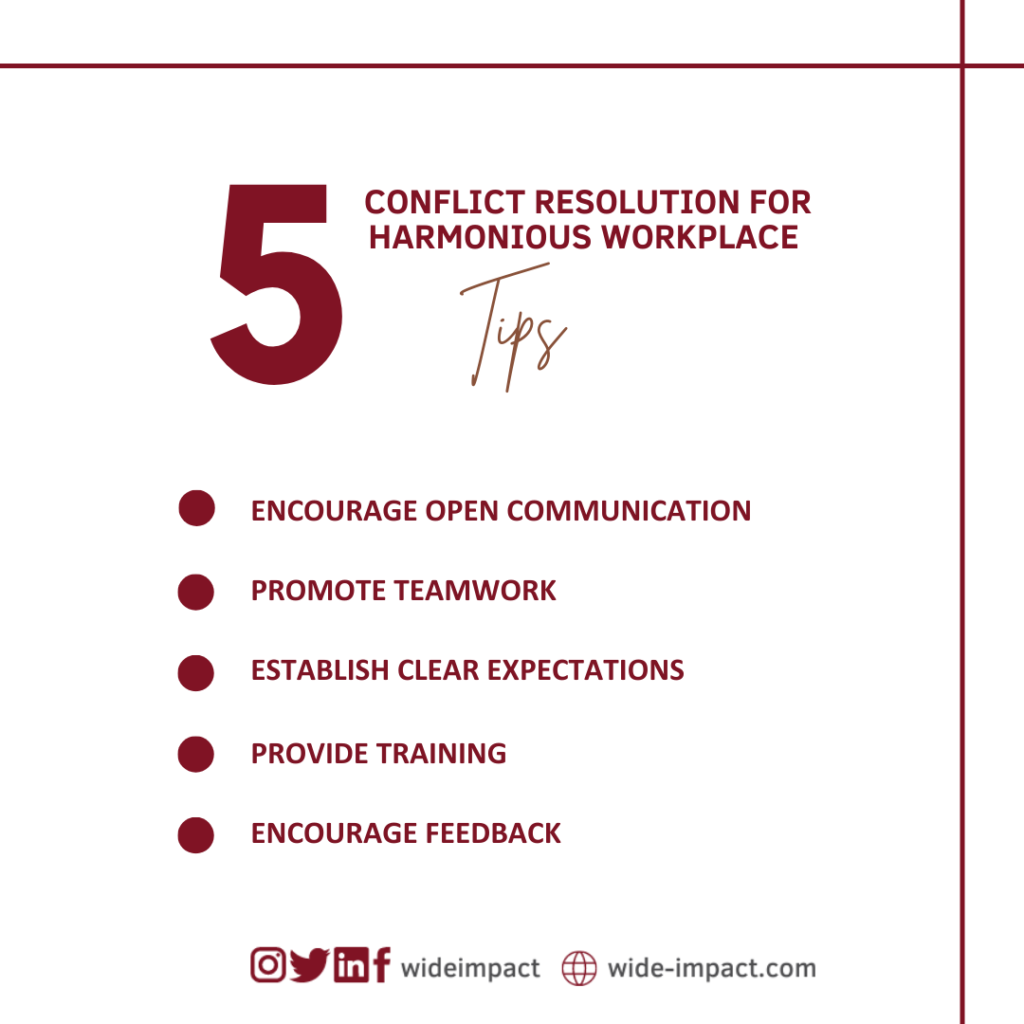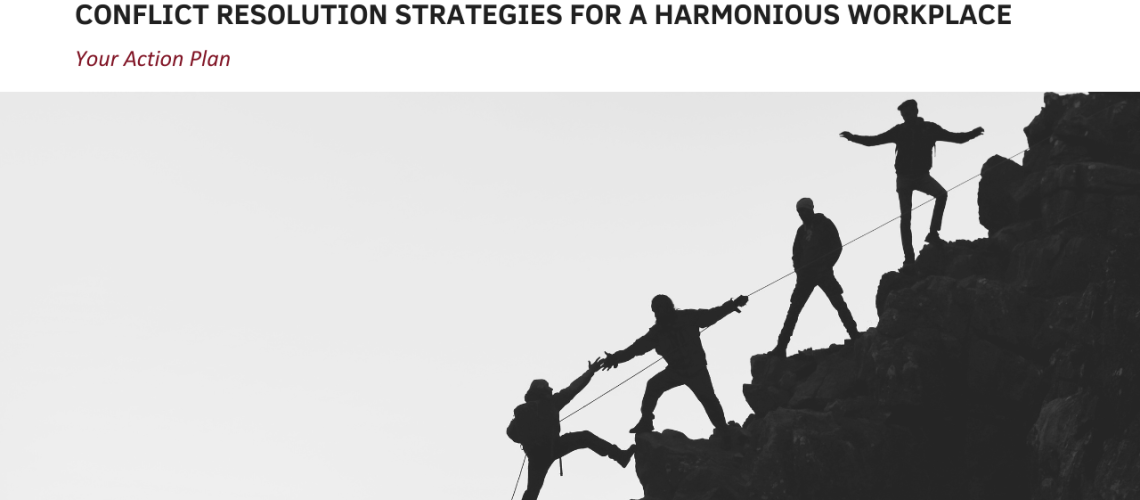By Dr. Salam Slim Sadek
Conflicts are an unavoidable part of any working environment. From differing opinions and personalities clashing, to miscommunication and power struggles, workplace conflicts can disrupt productivity, morale, and overall harmony. Whether it’s clashing opinions, miscommunication, or competing goals – these issues can arise causing tension among colleagues and affecting overall productivity.

Imagine a workplace where disagreements are not a cause for division, but rather an opportunity for growth. A place where conflicts are resolved swiftly and effectively, fostering a harmonious environment where everyone thrives. As a leader, you hold the power to create such a workplace. By equipping yourself with the right conflict resolution strategies, you can transform tensions into catalysts for collaboration and innovation.
When conflicts are left unaddressed or handled poorly, they can fester and escalate, causing irreparable damage to relationships, morale, and overall team performance. On the other hand, when conflicts are approached with tact and skill, they can become opportunities for personal and professional development, leading to improved collaboration, creativity, and productivity.
Now is the time to harness the power of effective conflict resolution. By doing so, you can foster a culture of collaboration, create stronger relationships, and propel your team towards unparalleled achievements. Join us on this transformative journey as we unlock the potential for growth and improvement through the art of resolving conflicts in the workplace.
Top Conflict Resolution Strategies for a Harmonious Workplace
When conflicts emerge, it is essential to employ effective strategies to address them successfully. Below are some of the foremost conflict resolution strategies that promote harmonious relationships and productivity among colleagues.

- Communication and Active Listening:
Effective communication and active listening are foundational strategies for resolving workplace conflicts. Open dialogue enables individuals to express their thoughts and concerns, nurturing empathy and understanding. Active listening involves fully engaging with others, refraining from interruptions or judgments, which builds trust and rapport.
When a colleague expresses frustration about a project’s direction, active listening involves attentively understanding their concerns and responding thoughtfully rather than reacting impulsively. - Mediation and Negotiation:
Mediation and negotiation are potent tools for resolving workplace conflicts involving opposing views. Mediation, led by a neutral third party, encourages open communication and the addressing of underlying issues. Negotiation entails finding common ground through compromise and cooperation.
Suppose two team members have conflicting ideas on project priorities. Mediation enables them to discuss their perspectives openly, while negotiation facilitates finding a solution that benefits both sides. - Collaborative Problem-Solving:
Collaborative problem-solving is a powerful strategy that harnesses diverse perspectives for effective conflict resolution. It encourages open communication, active listening, and brainstorming of solutions collectively. This inclusive approach promotes a more comprehensive decision-making process.
If two team members disagree on a project approach. Collaborative problem-solving would involve an open discussion where each person shares their thoughts, listens actively, and collectively brainstorm solutions that address both viewpoints. - Setting Clear Boundaries and Expectations:
Establishing clear boundaries and expectations is fundamental to preventing misunderstandings that can lead to conflicts. Open communication, both verbal and written, plays a pivotal role in defining guidelines and organizational policies.
A managers should clearly communicate project goals and expectations, providing employees with a reference point for acceptable behavior. Addressing boundary violations promptly demonstrates the organization’s commitment to upholding these standards. - Developing Emotional Intelligence (EI) Skills:
Fostering emotional intelligence among employees proves to be of immense value. EI training aids individuals in recognizing and managing their emotions while also promoting an understanding of others’ emotional states. Those with heightened emotional intelligence tend to excel in navigating conflicts, handling them with empathy and composure.
If a team member receives critical feedback on their project. An emotionally intelligent response might involve acknowledging their initial frustration, taking a moment to reflect, and then engaging in a constructive conversation with the feedback provider. - Implementing a Conflict Resolution Policy:
Establishing a formal conflict resolution policy within the organization offers a structured framework for managing conflicts. This policy should clearly delineate the steps to follow when conflicts arise, including involving HR or management as necessary.
When two colleagues have a heated disagreement, having a conflict resolution policy in place can guide them to first attempt resolution through open communication. If unsuccessful, they may then involve a supervisor or HR for assistance. - Promoting Empathy and Perspective-Taking
Encouraging employees to empathize with one another and view situations from different perspectives can significantly enhance understanding and facilitate conflict resolution. This approach can be seamlessly integrated into conflict resolution training and workshops.
When two team members have conflicting opinions on project priorities. Encouraging them to see the situation from each other’s viewpoint can lead to a compromise that benefits both parties and strengthens their working relationship. - Ongoing Learning and Improvement
Organizations should regularly evaluate and enhance their conflict resolution strategies. This entails gathering feedback from employees, reviewing past conflict resolution efforts, and making necessary adjustments to address emerging challenges effectively.
A company that frequently reviews feedback from employees regarding conflict resolution processes. This practice allows them to adapt and improve their strategies continually, resulting in more successful conflict resolution outcomes. - Embracing Diversity and Inclusion:
Promoting diversity and inclusion in the workplace can mitigate conflicts related to bias or discrimination. Creating an environment that embraces diversity and fosters inclusivity helps prevent conflicts arising from differences in identity or culture.
A workplace that actively celebrates various cultural festivals and traditions ensures that employees from diverse backgrounds feel valued and respected, reducing the likelihood of cultural conflicts. - Providing Conflict Coaching Services:
Offering conflict coaching services to employees can prove advantageous. Conflict coaches collaborate with individuals to develop specific conflict resolution skills and strategies, offering personalized guidance when conflicts arise.
An employee struggling with conflict resolution might seek assistance from a conflict coach. Together, they can work through strategies to address conflicts constructively, tailored to the employee’s unique needs and challenges. - Engaging in Team-Building Activities:
Participating in team-building exercises and activities can cultivate trust and improve communication among team members. Proactively strengthening team dynamics can serve as a preventive measure against conflicts escalating.
Regular team-building activities, such as collaborative problem-solving exercises or group projects, can foster a sense of camaraderie among team members, reducing the likelihood of interpersonal conflicts. - Acknowledging and Celebrating Successes:
Recognizing and celebrating successful conflict resolutions can reinforce the significance of these strategies and motivate employees to continue engaging constructively in conflict resolution efforts. Positive reinforcement fosters a culture of conflict resolution excellence.
An organization that highlights and commends instances where conflicts were resolved effectively demonstrates a commitment to conflict resolution as a valued skill. This recognition encourages employees to apply these strategies in their daily interactions.
Preventing Conflicts Before They Arise
Creating a harmonious workplace is not just about resolving conflicts when they occur, but also taking proactive measures to prevent them from happening in the first place. By addressing potential issues before they escalate into full-blown conflicts, you can foster a positive work environment and maintain productive relationships among your team members. Here are some strategies for preventing conflicts:

- Encourage open communication: Create an atmosphere where employees feel comfortable expressing their thoughts and concerns without fear of judgment or reprisal. Regularly check in with your team to ensure that everyone has a chance to voice any grievances or suggestions.
- Promote teamwork: Foster a collaborative culture where employees work together towards common goals rather than competing against each other. Encourage cross-departmental collaboration and provide opportunities for team-building activities.
- Establish clear expectations: Clearly communicate job responsibilities, performance expectations, and company policies to avoid misunderstandings that could lead to conflicts later on.
- Provide training and development opportunities: Invest in continuous learning initiatives that enhance employees’ skills and knowledge. This not only increases their confidence but also reduces the chances of conflict arising from skill gaps or miscommunication.
- Encourage feedback loops: Implement regular feedback sessions where individuals can share constructive criticism and receive recognition for their contributions. This creates an environment where people feel heard and valued, reducing the likelihood of pent-up frustrations turning into conflicts.
Remember, prevention is always better than cure when it comes to workplace conflicts! By implementing these proactive strategies, you can create a harmonious work environment that minimizes conflict occurrences while maximizing productivity and employee satisfaction.
Picture a workplace where conflicts no longer irritate but are instead met with open ears and open hearts. Envision a team that thrives on collaborative problem-solving, where conflicts become steppingstones towards innovation and success.
But remember, true change takes action. It requires your commitment to putting these strategies into practice, even in the face of difficulty. Conflict resolution is not always easy, and there will be challenges along the way. However, with perseverance and a belief in the transformative power of open communication and empathy, you can overcome any obstacles.
So, my fellow leaders, let us rise to the challenge. Let us create a workplace where conflicts serve as compounds for collaboration and innovation. Your dedication to effective conflict resolution will not only transform your team but also inspire others to follow your lead.
The path to a harmonious workplace starts with you. Embrace the power of effective conflict resolution, awaken the spark of positive change, and watch as your team flourishes. The possibilities are limitless, and the rewards immeasurable.
Now, go forth and lead with wisdom, compassion, and the determination to create lasting harmony in your workplace. Remember, you have the power to shape the future of your team. Embrace it and let conflict resolution become the cornerstone of your success.


